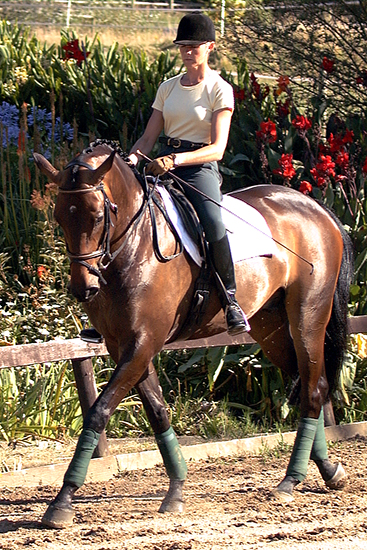
Making the most of your purpose-bred dressage horse!
Susanne Miesner talks about a problem most Australian dressage riders would like to have, selecting a purpose –bred horse. Still with our breeding industry growing at an astounding rate, many more of us are looking at the purpose-bred youngster for our next dressage star.
In Europe only a few people are lucky enough to grow up with horses, either because their parents ride or because they come from a farming background. Most riders there arrive in their horse haven via a riding school or pony club. In Europe they learn with school horses.
But where-ever you live in the world, one day the big moment arrives and buying your own horse seems possible.
While preferences vary as far as colour, height, talent and character of the new family member are concerned, most buyers want the same: a horse, five to eight years old, with a solid and well rounded education.
Very quickly it becomes evident those horses are very rare and even if they are available they often fall into the too-expensive category. Therefore the horses within the budget are younger and suddenly the buyer finds himself with a four or even three-year-old. Once home, it may turn out that the rider’s knowledge, acquired with school horses, or riding ponies, might not be enough for training a youngster.
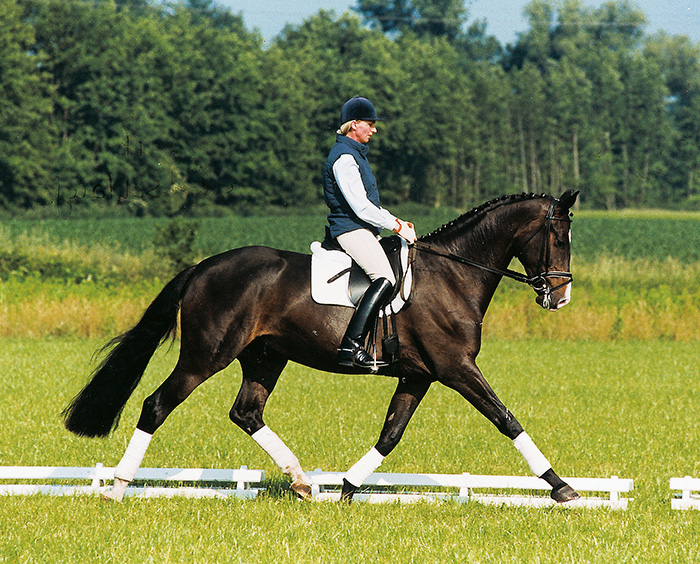
Susanne Miesner has had great success not only at Grand Prix level, but also in the Younghorse classes, here she is with Ronaldo who won the Bundeschampionate title as a four-year-old riding horse and was reserve champion five-year-old dressage horse the following year.
No wonder that Susanne Miesner, Pferdewirtschaftsmeister (Master of Horse Management) in Germany and author of specialized books about training of the young horse, is a sought-after expert. Her clinics are always well attended worldwide.
Susanne says you should ask yourself, one question: are you ready for a young horse?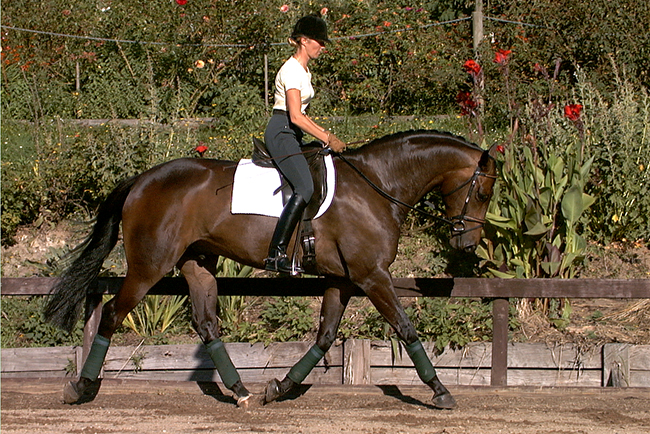
As these pictures show, young horses are not steady in their balance and willingness to work. Therefore buying a young horse needs to be well thought over. Teaching a youngster to become a good riding horse needs knowledge, riding and personal abilities and ideally some experience as well.
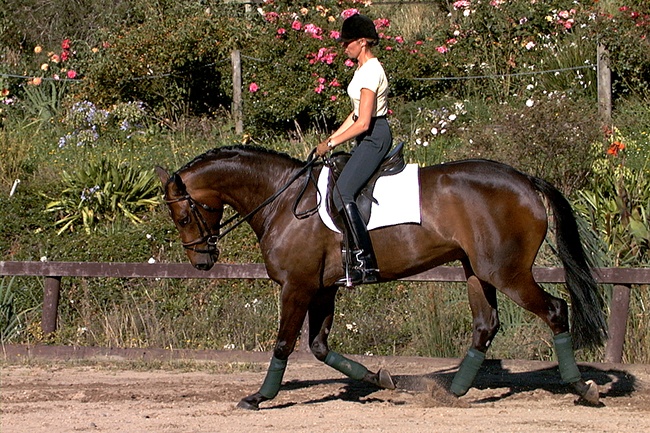
Young horses are not very steady in their balance and willingness to work. Therefore buying of a young horse needs to be well thought over. Teaching a youngster to become a good riding horse needs knowledge, riding and personal abilities and ideally some experience as well.
Why are so many people interested in schooling a young horse? Most often it is because it is difficult nowadays to find a well-trained horse that is sound and on the market. That is why many riders, especially those searching for quality, consider purchasing younger horses even if they lack the experience to train a youngster.
Finding a suitable trainer with the knowledge and patience to train both the horse and rider is the next difficulty. Unfortunately the subject of teaching young horses carries very little weight in the exams for trainers, at amateur and professional levels alike. Apart from those specialising in the preparation of young horses for sales or Young Horse Championships there are only a few riders working in this field. Without a suitable trainer the new owner or rider of a young horse will discover very quickly that teaching a youngster is not easy. It is a very complex subject requiring profound knowledge, special abilities and ideally some experience as well.
The basic teaching of a young horse is much more than training it to walk, trot or canter. Training means building the foundations that enable the horse to carry a rider, physically as well as mentally. The horse must be trained well enough to be able to move freely and without any tension – as if there was no weight on its back. This calls for building suitable constitution and condition. Only systematic training will develop the body. A young horse that has been given solid and well-rounded education will last a lot longer. A young horse not given this opportunity could easily be ruined at a young age by being asked too much and the wrong questions.
Tension or fun? The trainer of a young horse needs to spot the motive behind every action immediately. That applies to the handling of the horse as well as to riding.
Harmony – the main objective
In the years after the war many riders and their trainers relied upon the knowledge of cavalry schools in Europe which placed the highest importance on the training of remounts, young horses – no wonder, with the stamina and soundness of their horses being of paramount importance for the soldiers. Farming formed a second very important background for riding and many well-known riders came from a rural background.
Today this is different. Only a small percentage of riders grow up with horses or come from a rural background. Love of nature and animals are the main attractions that draw people towards horses. Harmony is their desire – a harmony in relationship as well as in motion. To achieve this it is necessary to train and teach the horse and to work on his shortcomings and weaknesses.
more follows below 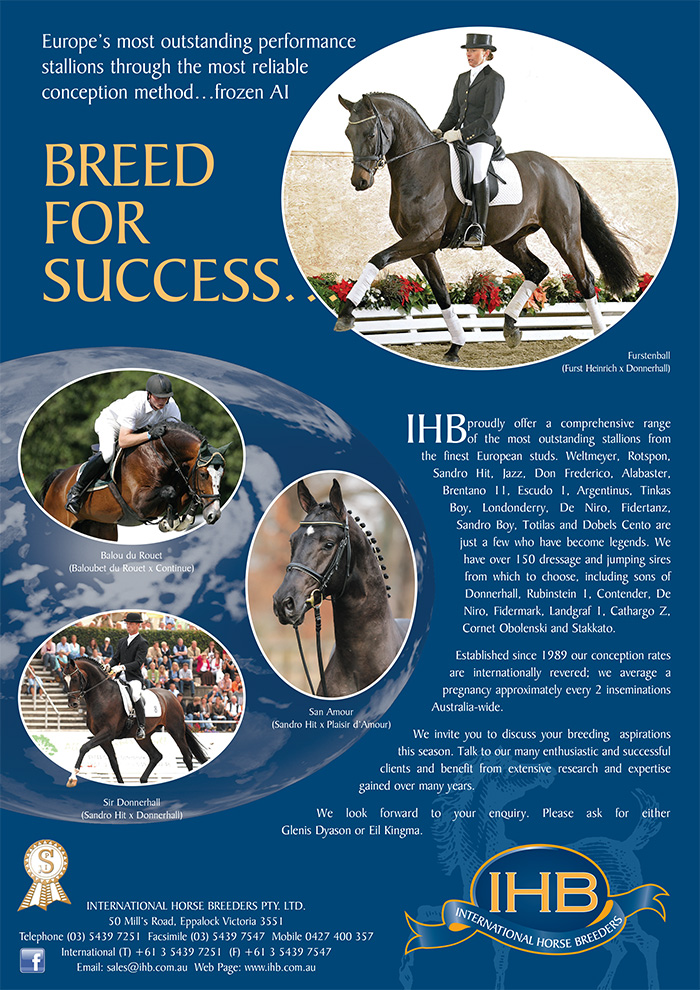
Riding is comparable to dancing: two living beings trying to perform the same movements. This becomes a joy for both if it is achieved, not only marching in step but in mutual balance. In riding this is even more difficult because two very different living beings are trying to find a common harmony. We know the rider has two legs, two arms, a short neck and can think logically. The horse has four legs, a long neck and acts instinctively. This means the rider needs good coordination, adaptability and sensitivity to bring the young horse into balance. The older well-trained horse can deal more easily with a disruption by the rider. As in dancing, real harmony can only be achieved if both partners are in unison. It is not the mechanical performance of training scale which make riding a joy but the achievement of finding a mutual inner and outer balance.
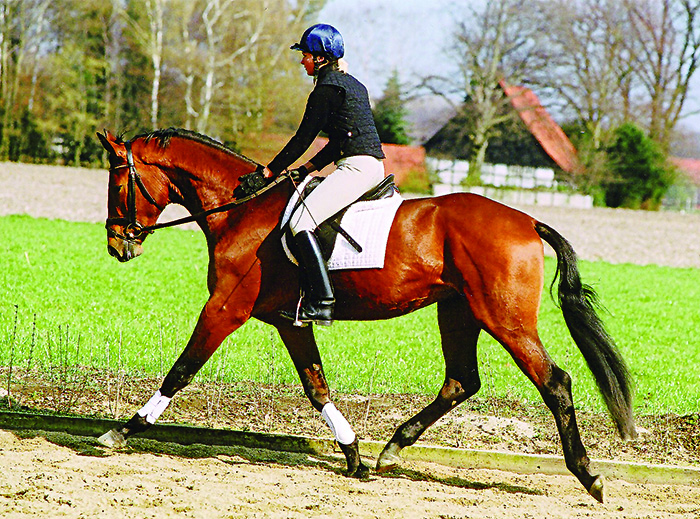
Basic training means education
A desire for harmony and balance does not mean that the horse doesn’t have to accept limits. He not only has to trust the rider but also respect him, on the ground as well as in the saddle.
Depending on the character of the individual horse, the situation and the rider’s main goals, clear limits have to be set. Certainly a pushy young stallion has to be treated differently from the shy young gelding which has been of very low standing in the herd. Whilst you have to ask respect from the former it is certainly recommended to be patient and build trust and reassurance in the latter. To make the correct decision instantly is an art.
Horses observe people meticulously. They recognize whether somebody has an aura of self-confidence and is quiet but persistent. This applies to the handling of the horse on the ground as well as under saddle. Like children, horses appreciate trust, but must know their limits.
The physical and mental outcomes of incorrect training
Riding a young and still growing and developing horse over a long period of time in the wrong frame can cause several different problems. We are not talking extremes here. Even little things like being constantly behind the vertical, in an incorrect frame, on the forehand or with a tense back can cause trouble.
Possible outcomes are:
– The horse becomes dull and loses sparkle. Movement and rideablity are lost.
– The horse becomes resistant. Quickly it gains the reputation of bad character and the label ‘unrideable’ sticks.
– Soundness problems arise which hinder further development.
Of course there are horses which have been ridden in an incorrect and unnatural frame over years and they are still willing to do their jobs, however they are exceptional. Specialised breeding has done a lot to offer, fantastic horses with excellent conformation and rideability. Many horses today naturally have a soft neck, a good back and active hindquarters that step under their centre of gravity. Therefore they should be easier to ride in a correct frame than the horses bred 30 or 40 years ago.
These improvements, however, may also have disadvantages because such horses are more sensitive, easier to disturb in their balance and especially quick to react to mistakes on the rein contact. Problems with contact are particularly noticeable nowadays.
Also, there is always the danger of overworking these young horses because they offer themselves so willingly. Talented horses are often worked too quickly and too hard. They need enough time for development during the first two years because they grow and develop just like any normal horse of that age. And they need the same time for their mental development as all other horses do. Therefore knowledge, riding ability and experience are necessary to train a young horse. Without those abilities training becomes a gamble. It may work with one horse by chance but can go terribly wrong with another.
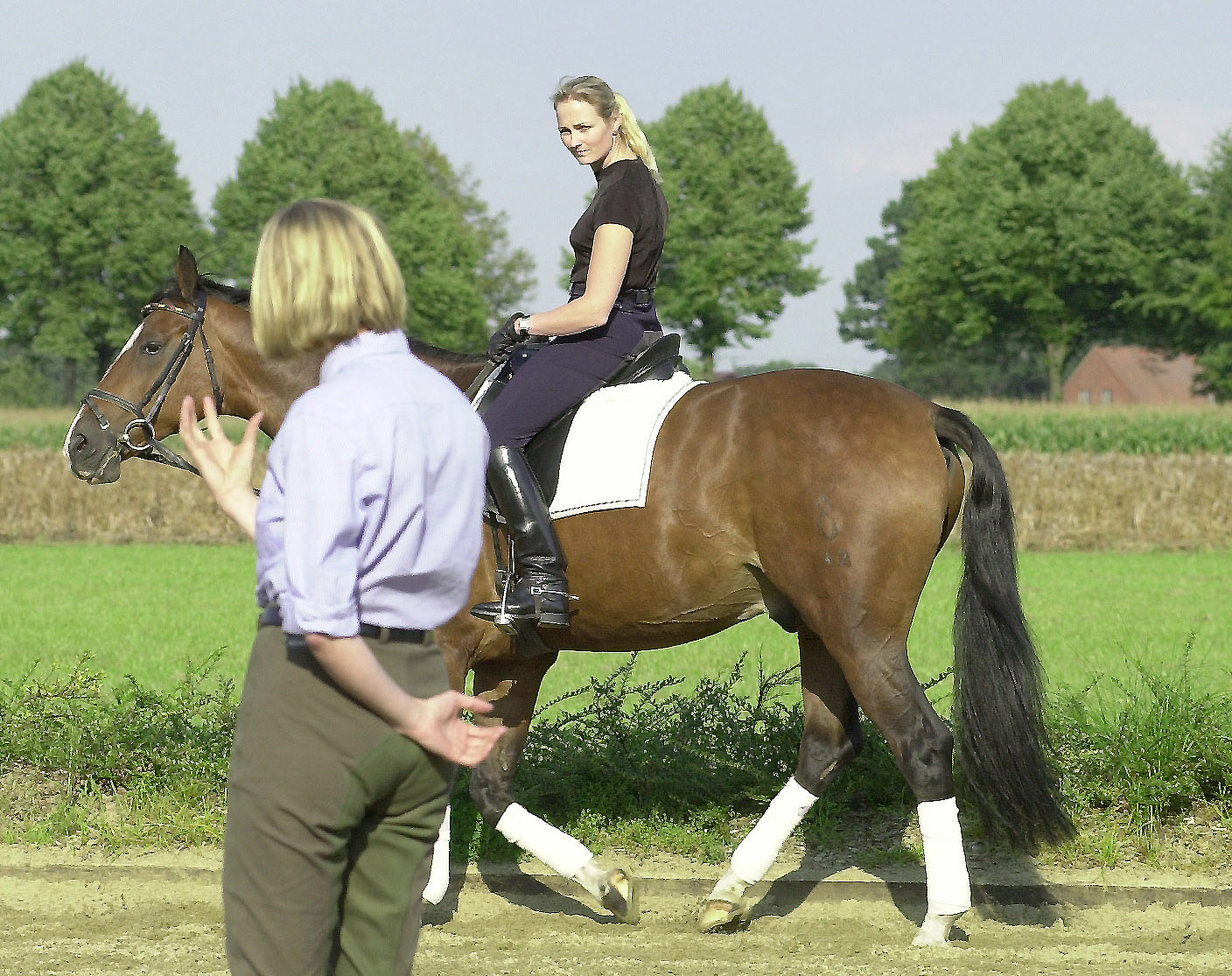
Training calls for thorough knowledge
Training calls for widespread knowledge as far as the rider’s attitude and actions are concerned. The rider needs to know what he wants and what he can ask of his horse. He needs to be able to assess which actions are understood by the horse. He or she needs to realize his or her own strengths and weaknesses and must be willing to work on those. There are a lot of self-help books for managers, investors, housewives, tall people and thin people. Some are good, some are less good but all ask of the reader some self analysis and knowledge of their limitations. And they all recommend not to blame your situation but to try to adapt and change. Unfortunately this ability is rare among riders. Some may claim to be willing to change but most are not really prepared to dig down deep to discover the root of their mistakes. Whilst in swimming, running and skiing it is obvious who is winning or loosing it is different in riding. Equestrians can always blame the horse.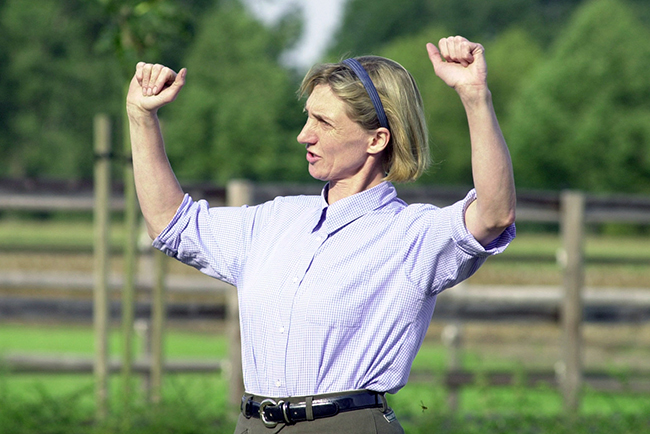
Test yourself – Are you ready for a young horse?
Your answers to the following questions will help to indicate whether or not a young horse is for you. The more often you can answer ‘yes’ to a question, the more often it shows that you have dealt with the subject ‘training of a young horse’. It shows that you know what to expect after buying a young horse. But be honest! If your answer is no more often than yes you should ask yourself whether a young horse is really a good idea for you. It might suggest that an older horse with more experience could be more suitable.
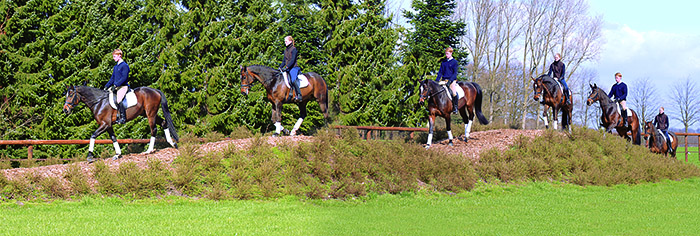
– you are very experienced and have ridden many different horses of different training levels.
– you can balance yourself easily in a basic seat or in a forward seat.
– you are secure in the saddle and aren’t easily scared by a buck or sudden speed, meaning you are not likely to panic in unforeseen situations.
– you have enough time to work with your horse daily. Or you have a suitable rider/trainer who can work the horse when you don’t have time.
– you have a suitable trainer or teacher who regularly checks on your progress and is ready to help at critical stages.
– your stable offers enough freedom for a young horse apart from lungeing or riding, for instance paddocks, small or large.
– there is a suitable area nearby for trail riding.
– you don’t lose your patience easily. You are ready to accept setbacks that inevitably arise while training young horses.
– you are aware that you might be forced to put your ambitions on hold until your young horse is ready. You know that training a young horse is different from working with an older horse.
– you are prepared to think about problems that might arise and try to solve them intellectually.
– persistence is your forte. You are not moody and your reactions tend to be the same every day.. You can totally switch off while working with your horse and don’t use it as an outlet for daily frustrations.
– you are ready to learn for the good of your horse. You listen to other opinions, take lessons regularly and attend clinics.
– you are not in a hurry to compete. You are willing to prepare for your first outing with patience even if it means waiting for one or two years.
– the other owners and riders at your stable understand your work with a young horse and show consideration.
– you look at these objectives as being your goal. You want to train your own horse. You realize that you are responsible for the development of your horse, physically as well as mentally.
This article first appeared in the January 2004 issue of THM.



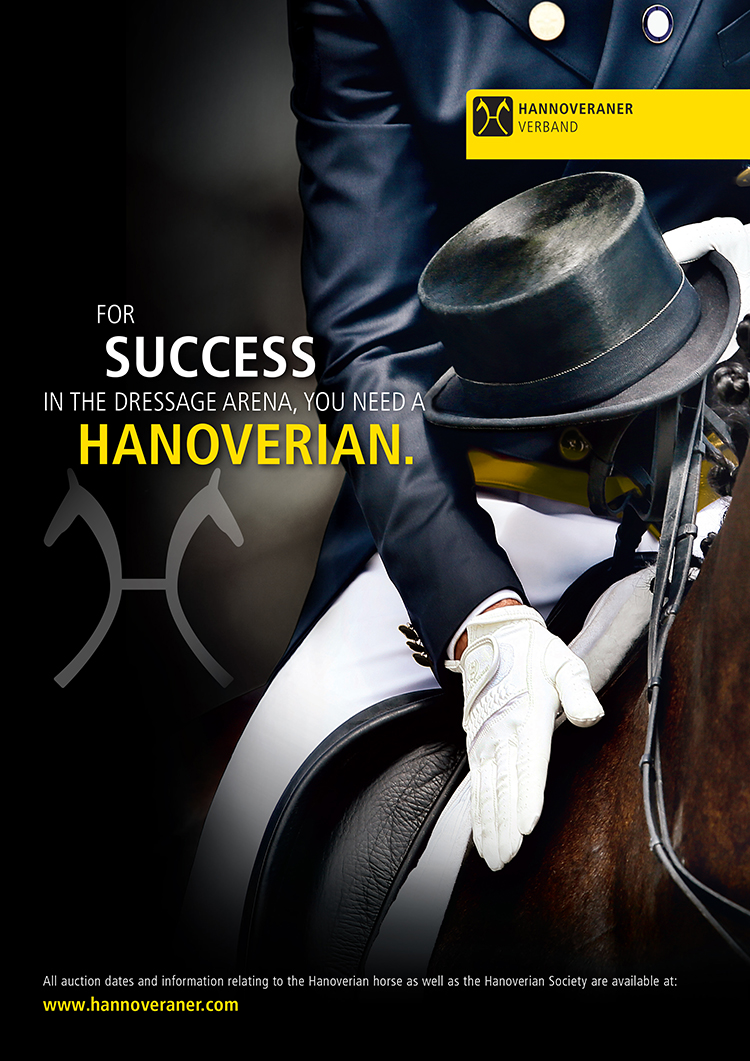
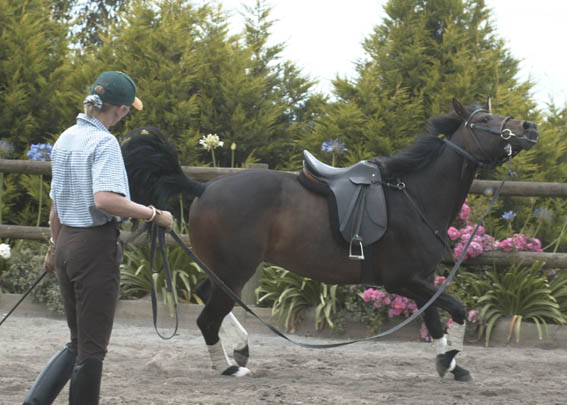
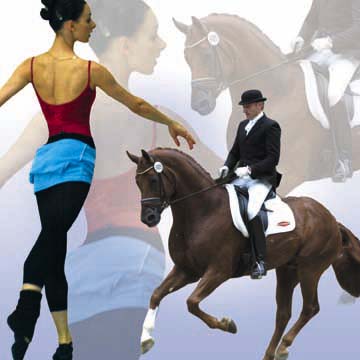
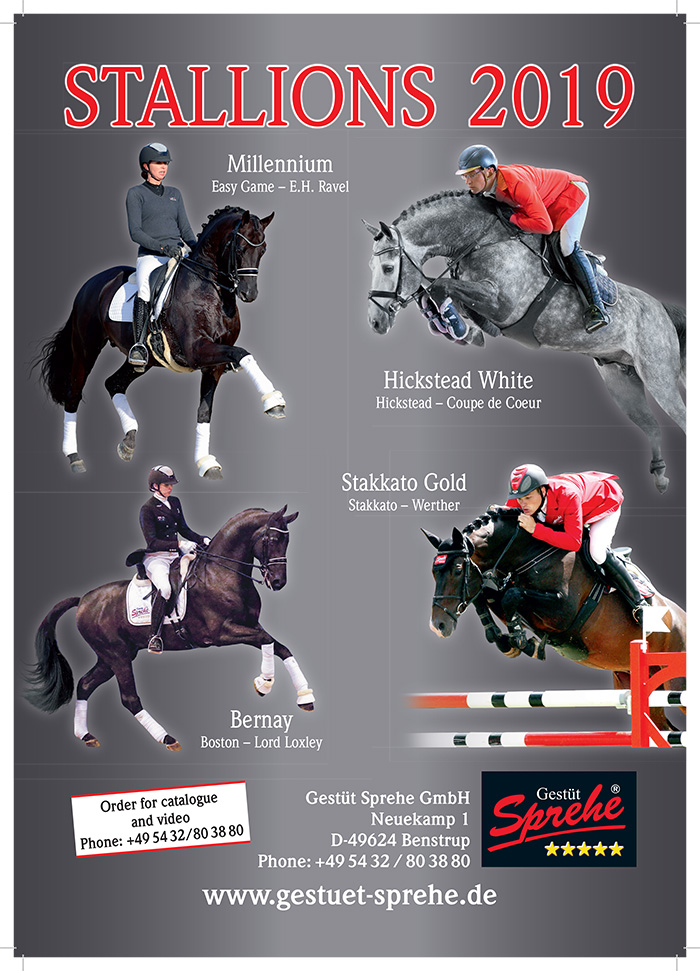
I would add to that excellent list, flexibility and a sense of humour! Not all young horses operate according to the predictions in the manuals of horsemanship, even when you are consistent and persistent. Even when they DO, progress is rarely linear. You have to be prepared to be creative (but not incorrect) in your training, know when to recognize the signs that your youngster has, physically and/or mentally, had all it can handle for one day, and be able to laugh and say, “okay, tomorrow is another day”.